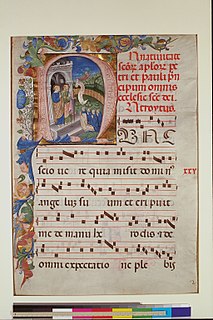 W
WIn library and information science, cataloging (US) or cataloguing (UK) is the process of creating metadata representing information resources, such as books, sound recordings, moving images, etc. Cataloging provides information such as creator names, titles, and subject terms that describe resources, typically through the creation of bibliographic records. The records serve as surrogates for the stored information resources. Since the 1970s these metadata are in machine-readable form and are indexed by information retrieval tools, such as bibliographic databases or search engines. While typically the cataloging process results in the production of library catalogs, it also produces other types of discovery tools for documents and collections.
 W
W W
WAn auction catalog or auction catalogue is inventory of listing of items to be sold at an auction. It is made available some time before the auction date. Auction catalogs for rare and expensive items, such as art, books, jewelry, postage stamps, furniture, wine, cars, posters, published for sales around the world, can be of interest in themselves--they will can include detailed descriptions of the items, their provenance, historical significance, photographs, and even comparative analyses and descriptive essays by subject experts.
 W
WCatalogue of Works in Refutation of Methodism: from its Origin in 1729, to the Present Time is the title of an antiquarian bibliography or catalogue first published in America in 1846 by the 19th century author Curtis H. Cavender, who compiled the work under the anagrammatic pen name of H.C. Decanver.
 W
WDigital Scriptorium (DS) is a non-profit, tax-exempt consortium of American libraries with collections of pre-modern manuscripts, or manuscripts made in the tradition of books before printing. The DS database represents these manuscript collections in a web-based union catalog for teaching and scholarly research in medieval and Renaissance studies. It provides access to illuminated and textual manuscripts through online cataloging records, supported by high resolution digital images, retrievable by various topic searches. The DS database is an open access resource that enables users to study rare and valuable materials of academic, research, and public libraries. It makes available collections that are often restricted from public access and includes not only famous masterpieces of book illumination but also understudied manuscripts that have been previously overlooked for publication or study.
 W
WA font catalog or font catalogue is a collection of specimen of typefaces offering sample use of the fonts for the included typefaces, originally in the form of a printed book. The definition has also been applied to websites offering a specimens collection similar to what a printed catalog provides.
 W
WThe IKEA Catalogue is a catalogue published annually by the Swedish home furnishing retailer IKEA. First published in Swedish in 1951, the catalogue is considered to be the main marketing tool of the company and, as of 2004, consumes 70% of its annual marketing budget. Worldwide, approximately 208 million copies of the catalogue were printed in fiscal year 2013, more than double the number of Bibles expected to be printed in the same period.
 W
WThe Kokusho Sōmokuroku (国書総目録)loosely, "General Catalog of National Books") is a Japanese reference work that indexes books published in Japan or written by Japanese before 1867. First published by the Iwanami Shoten company in 1963, an expanded edition was released in 1989. In its current edition, the Kokusho Sōmokuroku consists of eight volumes, in addition to an author index and appendix. The catalog was put together by compiling over one million library catalog cards from over 600 libraries across Japan in an effort to catalog books published before the Meiji Restoration still in existence that were written in Japan or by Japanese nationals. The catalog does not contain Chinese classics, Buddhist scriptures, or books from non-Japanese sources.
 W
WThe Libro de los Epítomes is a catalogue summarising part of the library of around 15-20,000 books which Ferdinand Columbus assembled in the early sixteenth-century in an effort to create a library of every book in the world. The manuscript is currently part of the Arnamagnæan Manuscript Collection.
 W
WA Term Catalogue, German Messkatalog, is a serial publication compiled to inform customers—most importantly book traders from other cities—of the book production as available on the book fairs. The first such catalogue was issued by Georg Willer in Augsburg in 1564. Several projects followed the model including the series of English Term Catalogues issued by John Starkey and Robert Clavell under the title Mercurius Librarius, or, a catalogue of books from 1668 to 1711. "Term" referred to the dates of the fairs that would be held as platforms of the trade.
 W
WTheatrum Pictorium, or Theatre of Painting, is a short-hand name of a book published in the 1660s by David Teniers the Younger for his employer, the Archduke Leopold Wilhelm of Austria. It was a catalog of 243 Italian paintings in the Archduke's collection of over 1300 paintings, with engravings of the paintings taken from small models that Teniers had personally prepared. A second edition with page numbers was published in 1673.
 W
WWilliams Sonoma is an American retailer of cookware, appliances and home furnishings. It is owned by Williams-Sonoma, Inc. and was founded by Charles E. (Chuck) Williams in 1956.